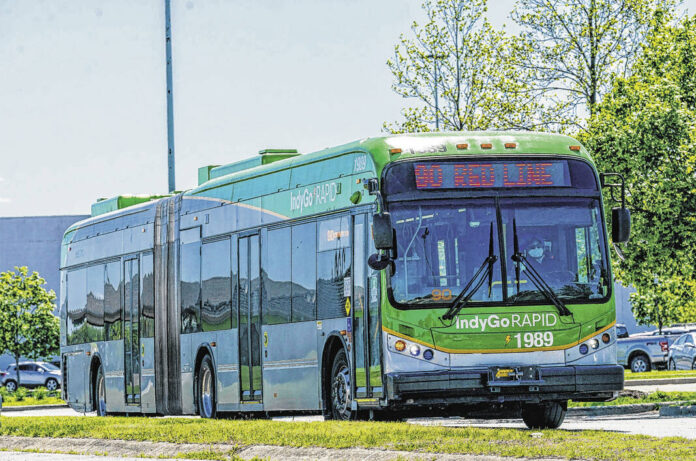For thousands of workers in Johnson County, owning a car is the only way to get to and from work.
A new study on public transportation was released this week the Metropolitan Planning Organization (MPO), which weighed the costs and benefits of various transit expansion projects in northern Johnson County. The study concluded in October and the 122-page document is available for the public to view online.
The study took place over the course of a year and included input from community stakeholders, including Franklin Mayor Steve Barnett, Greenwood Mayor Mark Myers and Access Johnson County riders.
Riders favored adding Saturday service for Access Johnson County, as well as expanded weekday hours and more locations served, according to the study.
Riders said work and shopping are the two most common trip purposes, followed by medical appointments.
About 44% of riders identified cross-county transportation as needed, but said it is rarely available when they need it, the study says. Riders said their most common cross-county transportation needs were focused on locations in Indianapolis, Edinburgh and Nashville. Frequency of need for rides to these destinations varied from daily to once or twice per month, the study says.
Options to expand services including expanding the IndyGo Red Line, which currently runs from Broad Ripple to the Greenwood Park Mall, south to Whiteland or even Franklin, had mixed reactions. However, almost everyone was in favor of expanding Access Johnson County services, said Sean Northup, MPO’s deputy director.
“There’s not enough east-west connections, everyone agreed on that,” Northrup said. “People were pretty happy with Access Johnson County, and said it was a good service, but too small. When it came to the Red Line, there were some very much in favor of extending it, but some very much not in favor. With Access Johnson County, there was a much larger percentage of people who wanted to expand it.”
Riders were divided on what type of scheduling method is best.
“Some people are fans of on-demand transit where you can call ahead and the bus route is calculated on where you’re dropping off and picking up,” Northrup said. “There are some fans of fixed routes, where you go (to) the bus line and it carries more people. Others want things to be as cost-effective as possible.”
Any increase in funding and service to Access Johnson County or the IndyGo Red Line would require an income-tax referendum put forth by a trustee of a township that borders Indianapolis, but that could take a while to come to fruition, Northrup said. Something that could come sooner is a workforce shuttle bus connecting residents to warehouses near Interstate 65, which would instead require a business property tax increase voted for by a majority of the owners of the corporate properties, Northup said.
Some of the largest employers near I-65 in Greenwood include Amazon, FedEx, Ulta Beauty and Milwaukee Tool. Connecting residents to those job opportunities would pay immediate dividends, Myers said.
“I’ve been involved in the transit plan for quite a few years, so I understand the need for mass transit into Johnson County,” Myers said. “There are various options that are possible. We need an east-west connection. We need a better transit plan to get our employees to and from work on both the east and west sides of the city. There are options there for business landowners to pay for those so it doesn’t cost local taxpayers.”
While some people may have reservations about increasing public transportation access, citing crime and homeless, Myers, who served on the Greenwood Police Department for 14 years, said it does neither.
“I don’t see criminals jumping on a bus to get away from a crime. Homeless people are not riding the buses themselves. I think those are myths and not proven facts. The way I see it down here, it would be an asset to our residents and to our businesses,” Myers said. “The younger crowd is more used to public transportation and open to the fact that they’re less likely to own multiple vehicles in their families. It would ease their checkbooks not making two car payments and getting back and forth in a safe and efficient manner.”
The next step to try and improve transit service will be to meet with business owners and gauge their interest in funding a workforce connecter, he said.
Such a shuttle has already been successful in Plainfield, and recently opened in Whitestown, Northup said.
Although Franklin Township won’t have expanded service unless a township to its north votes in favor of an income tax referendum, increased funding for public transportation is key to a thriving community, Barnett said.
“Locally, it’s helping people get to doctor’s appointments and get to grocery stores,” Barnett said. “I think we can do a better job with transportation to get people to work, but it boils down to funding.”
To read the plan visit indympo.org/whats-completed/regional-plans/transit-plans.





